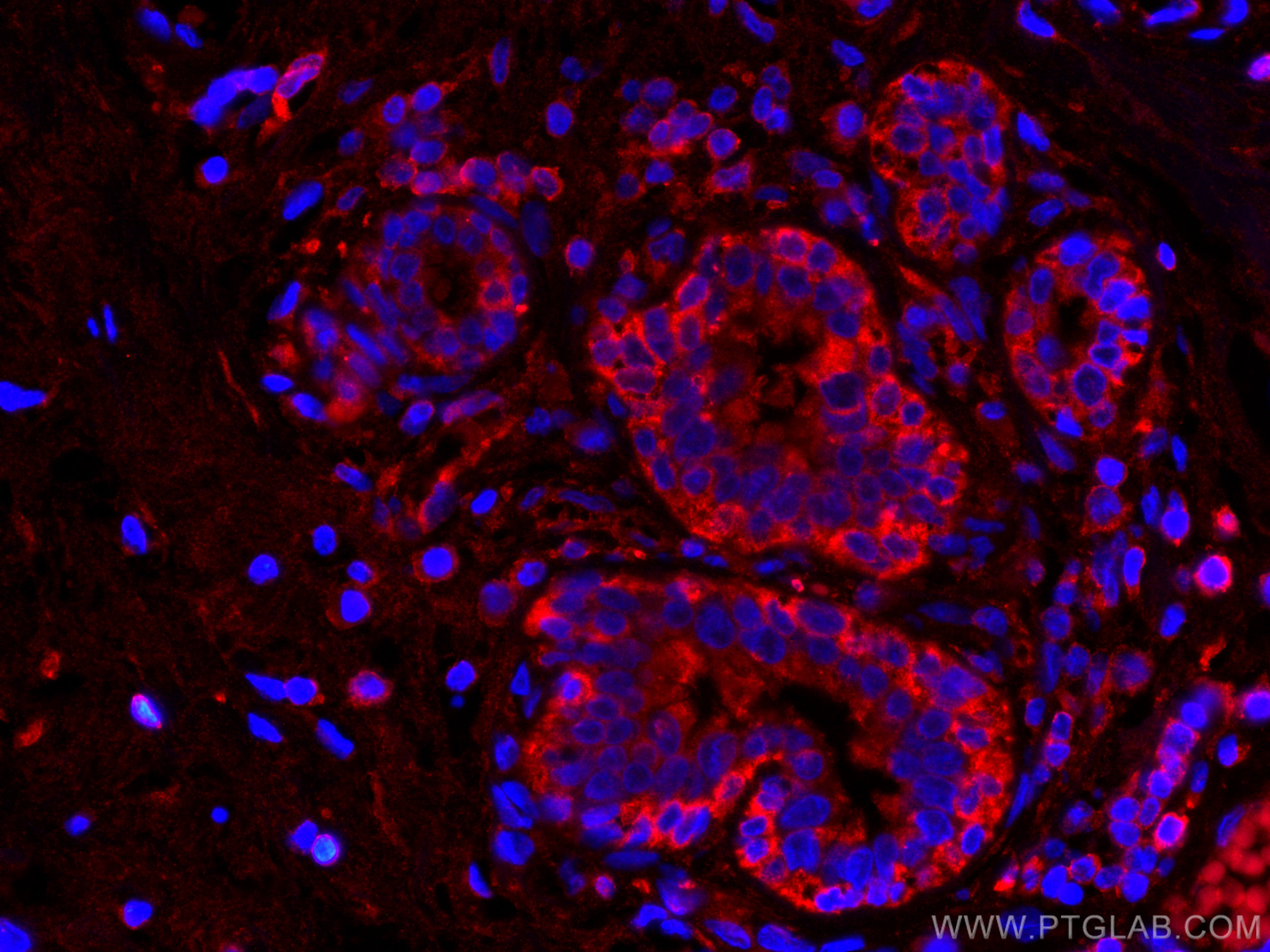Tested Applications
| Positive IF-P detected in | human breast cancer tissue |
Recommended dilution
| Application | Dilution |
|---|---|
| Immunofluorescence (IF)-P | IF-P : 1:50-1:500 |
| It is recommended that this reagent should be titrated in each testing system to obtain optimal results. | |
| Sample-dependent, Check data in validation data gallery. | |
Product Information
CL594-66269 targets L2HGDH in IF-P applications and shows reactivity with human, pig samples.
| Tested Reactivity | human, pig |
| Host / Isotype | Mouse / IgG2a |
| Class | Monoclonal |
| Type | Antibody |
| Immunogen | L2HGDH fusion protein Ag8382 Predict reactive species |
| Full Name | L-2-hydroxyglutarate dehydrogenase |
| Calculated Molecular Weight | 463aa,50 kDa; 441aa,49 kDa |
| Observed Molecular Weight | 45 kDa |
| GenBank Accession Number | BC006117 |
| Gene Symbol | L2HGDH |
| Gene ID (NCBI) | 79944 |
| RRID | AB_2919974 |
| Conjugate | CoraLite®594 Fluorescent Dye |
| Excitation/Emission Maxima Wavelengths | 588 nm / 604 nm |
| Form | Liquid |
| Purification Method | Protein A purification |
| UNIPROT ID | Q9H9P8 |
| Storage Buffer | PBS with 50% Glycerol, 0.05% Proclin300, 0.5% BSA, pH 7.3. |
| Storage Conditions | Store at -20°C. Avoid exposure to light. Stable for one year after shipment. Aliquoting is unnecessary for -20oC storage. |
Background Information
L2HGDH(L-2-hydroxyglutarate dehydrogenase, mitochondrial) is also named as duranin, C14orf160 and belongs to the L2HGDH family. The putative L2HGDH is predicted to be targeted to the mitochondria where its mitochondrial targeting sequence is presumably removed(PMID:16005139). Defects in L2HGDH are the cause of L-2-hydroxyglutaric aciduria (L2HGA). It has 2 isoforms produced by alternative splicing with the molecular weight of 50 kDa and 48 kDa. L2HGDH also can be detected as ~45kD due to the 51aa transit peptide cleaved.
Protocols
| Product Specific Protocols | |
|---|---|
| IF protocol for CL594 L2HGDH antibody CL594-66269 | Download protocol |
| Standard Protocols | |
|---|---|
| Click here to view our Standard Protocols |



